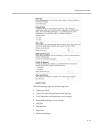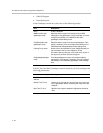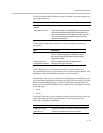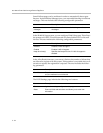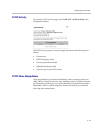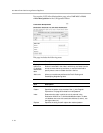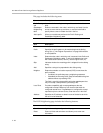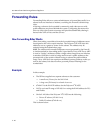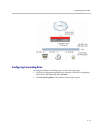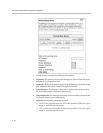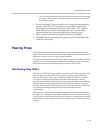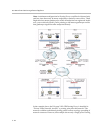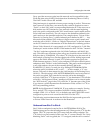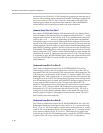
Configuring the V2IU 4350
3 - 39
Regular Expressions
Alias manipulation patterns and prefixes use regular expressions to match a
string in the destination alias. A regular expression can be a string of literal
characters to match or a set of special expressions.
Alias manipulation patterns can match a sub-string at any location and
number of times within the alias. Prefixes are always searched from the left of
the alias and cannot match a middle part or the end of the alias.
Regular expressions are listed in <l_link>Table 1 and <l_link>Table 2 lists
some example expressions.
Table 1 Regular Expressions
Symbol Description
. Matches any single character.
[] Matches any single character listed between the []. For example,
[abc], [123]. If the characters are separated by a -, all characters
between the two are matching, e.g. [a-z], [0-9]
() Matches the literal string given, e.g. (abc)
| Matches the block on either side of the |, e.g. a|b.
? Matches 0 or 1 of the preceding block.
* Matches 0 or more of the preceding block.
+ Matches 1 or more of the preceding block.
\ Escapes the special meaning of the next character.
{a} Matches exactly 'a' numbers of the preceding block.
{a,} Matches 'a' or more of the preceding block.
{a,b} Matches between 'a' and 'b' (inclusive) of the preceding block.
Table 2 Example Regular Expressions
Expression Description
100 Matches the string 100.
(555)?123 Matches 555123 or 123.
(408|555) Matches 408 or 555.
555[0-9]{3} Matches 555 followed by exactly 3 digits.
# Matches the character '#'.
\* Matches the character '*'. Note that '*' by itself is a regular
expression and must therefore be escaped with a '\' to match the
character itself.



